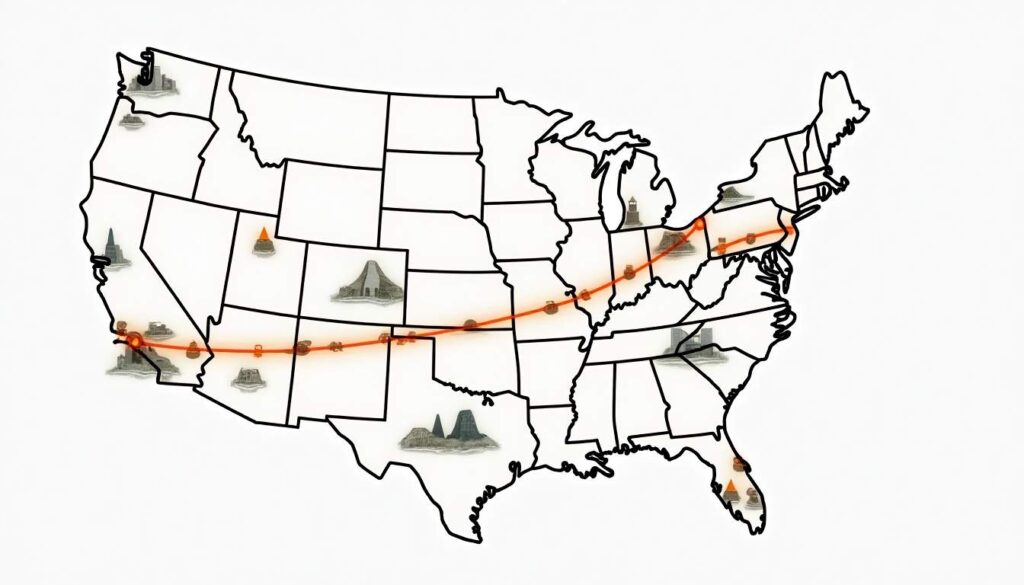Moving to a new home is often a mix of excitement and stress. Whether you’re relocating across town or across the country, understanding the nuances of your move can make the process smoother and less overwhelming. One of the most important distinctions to grasp is the difference between local and long-distance moving. This distinction affects everything from costs and logistics to timelines and legal regulations.
In this article, we’ll explore the key differences between local and long-distance moving, helping you make informed decisions and prepare effectively for your upcoming move.
Defining Local vs. Long-Distance Moves
What Qualifies as a Local Move?
A local move typically refers to relocating within the same city or metropolitan area. The exact distance can vary depending on the moving company, but generally, moves under 50 to 100 miles are considered local. For example, moving from one neighborhood to another within New York City or relocating within the Los Angeles metropolitan area would be classified as local moves.
Local moves are usually completed within a day or two because the distance is short and the logistics are simpler. Many moving companies charge local moves by the hour, which means the total cost depends on the time it takes to load, transport, and unload your belongings.
What Constitutes a Long-Distance Move?
Long-distance moves, also known as interstate or cross-country moves, involve relocating beyond a certain mileage threshold—often over 100 miles or crossing state lines. For instance, moving from Chicago to Denver or from Miami to Atlanta would be considered long-distance moves.
These moves are more complex due to the extended distance, potential need for multiple transportation modes, and additional regulations. Long-distance moves usually take several days or even weeks to complete, depending on the distance and route.
Cost Differences Between Local and Long-Distance Moves
How Local Moving Costs Are Calculated
Local moving companies typically charge by the hour. The hourly rate can range from $80 to $150 depending on the region and the number of movers required. For example, a two-person crew might charge $100 per hour, and if your move takes five hours, your total cost would be around $500.
Additional fees may apply for packing services, moving heavy or specialty items, or moving on weekends or holidays. However, because the move is short, you usually avoid costs related to fuel surcharges or overnight storage.
Pricing Structure for Long-Distance Moves
Long-distance moving costs are generally calculated based on the weight of your shipment and the distance traveled. The average cost per mile can range from $0.50 to $0.70 per pound, depending on the moving company and route. For example, moving 5,000 pounds over 1,000 miles could cost between $2,500 and $3,500.
Because of the complexity and distance, long-distance moves often include additional charges such as fuel surcharges, toll fees, and storage costs if your belongings need to be held temporarily. It’s important to obtain a binding estimate from your moving company to avoid unexpected expenses.
Logistics and Planning Considerations
Local Moves: Flexibility and Speed
One of the advantages of local moves is their relative simplicity. Since the move is close by, you have more flexibility in scheduling and can often complete the entire process in a single day. This makes local moves ideal for those who want to minimize disruption to their daily routines.
Additionally, local moves often allow for more hands-on involvement. You can easily supervise the movers, make last-minute adjustments, or even transport some items yourself. This flexibility can reduce stress and help ensure your belongings are handled carefully.
Long-Distance Moves: Coordination and Timing
Long-distance moves require careful planning and coordination. You’ll need to book your moving company well in advance, often several weeks or months ahead, to secure your preferred moving dates. Because the move involves longer transit times, you may need to arrange temporary accommodations or storage if your new home isn’t ready upon arrival.
Timing is critical with long-distance moves. Movers must coordinate routes, permits, and delivery windows, which can be affected by weather, traffic, or other unforeseen factors. Staying in close communication with your moving company and having a detailed moving checklist can help keep the process on track.
Legal and Regulatory Differences
Regulations Governing Local Moves
Local moves are generally less regulated than long-distance moves. Since the move stays within one state or municipality, it’s subject to local laws and ordinances. Most local movers do not require special licensing beyond standard business permits.
However, it’s still important to verify the reputation and licensing of local movers. Many states have consumer protection agencies or moving associations that provide resources and complaint resolution services.
Long-Distance Moving Regulations
Long-distance moves, especially those crossing state lines, are regulated by federal agencies such as the Federal Motor Carrier Safety Administration (FMCSA). Moving companies must be registered with the FMCSA and provide customers with a written estimate, bill of lading, and a booklet outlining their rights and responsibilities.
Additionally, long-distance movers must comply with safety standards, insurance requirements, and dispute resolution procedures. Consumers are protected by federal laws that require movers to provide binding or non-binding estimates and to handle claims for lost or damaged goods appropriately.
Choosing the Right Moving Company for Your Needs
Finding a Reliable Local Mover
When hiring a local mover, it’s important to get multiple quotes and check reviews from previous customers. Look for companies that offer transparent pricing, clear contracts, and comprehensive services including packing, loading, and unloading.

Because local moves are often charged by the hour, ask about the estimated time required and any potential additional fees. Confirm whether the company provides insurance coverage for your belongings during the move.
Selecting a Long-Distance Moving Company
Long-distance moves require even more diligence in selecting a mover. Verify that the company is licensed with the FMCSA and has a good track record with the Better Business Bureau or other consumer protection organizations.
Request a detailed, written estimate and understand whether it is binding or non-binding. Binding estimates guarantee the price won’t change unless you add services, while non-binding estimates may fluctuate based on actual weight and distance.
Also, inquire about the company’s claims process and insurance options. Because your belongings will be in transit for longer periods, adequate coverage is essential to protect against loss or damage.
Additional Tips for a Smooth Moving Experience
Packing and Preparation
Regardless of whether your move is local or long-distance, proper packing is crucial. Use sturdy boxes, label everything clearly, and protect fragile items with bubble wrap or packing paper. For long-distance moves, consider creating an inventory list to track your belongings.
If you’re short on time or want to reduce stress, many moving companies offer professional packing services. This can be especially helpful for long-distance moves where careful packing can prevent damage during transit.
Timing and Scheduling
Plan your move during off-peak seasons if possible. Summer months and weekends tend to be the busiest and most expensive times to move. Scheduling mid-week or during the fall and winter can save money and increase availability.
For long-distance moves, book your moving company as early as possible to secure your preferred dates. Confirm all details a few days before the move to avoid last-minute surprises.
Managing Stress and Expectations
Moving can be emotionally and physically taxing. Set realistic expectations about timelines and potential challenges. Communicate clearly with your moving company and stay organized with checklists and timelines.
Remember that both local and long-distance moves have unique challenges, but with proper planning and the right support, your transition can be a positive step toward your new beginning.
Conclusion
Understanding the difference between local and long-distance moving is essential for planning a successful relocation. Local moves offer convenience and flexibility with hourly pricing and quick turnaround, while long-distance moves require more coordination, regulatory compliance, and a pricing structure based on weight and distance.
By recognizing these differences, you can choose the right moving company, budget appropriately, and prepare effectively for your move. Whether you’re moving down the street or across the country, informed decisions will help make your moving experience smoother and less stressful.




